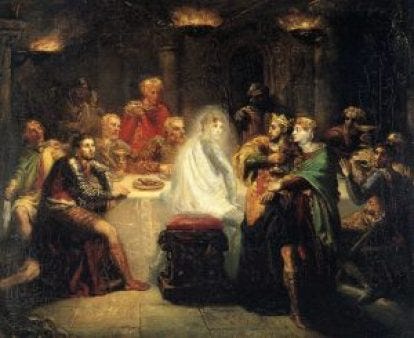
A Concise History of Ghosts and Famous Accounts in Literature
For as long as human beings have been self-aware, it seems they have also been aware of ghosts. The concept of ghosts, and also ghost stories, dates far back into human history and has captivated and mystified the human race for generations.
A rustle in the bushes, the sound of something creaking, and the anxiety entwined in our instinct to survive, that makes us see or feel things that may not be there. But also, in addition, the human belief that something beyond death could exist.
What is a ghost?
What we understand as a ghost today has its roots in the myths and beliefs of ancient cultures. Ghosts were and sometimes still are believed to be the spirit of a person or animal that exists after the body has died. It is partly because of this belief that many funeral rituals initially took place and were practised to prevent the existing spirit from remaining on Earth and ‘haunting’ the living.
Further to this, the existence of ghosts is often believed because of the human experience of feeling haunted or being in the presence of a spirit. This can range from hearing, seeing, feeling strange, or other unexplainable spooky happenings. For example, an inanimate object that moves freely of its own accord is often cited as being caused by a ghost.
The Earliest Ghost Stories:
Ghost stories are anything but a contemporary phenomenon. They have been passed down from generation to generation for centuries, either orally or through the written word. Ancient cultures believed that a human soul or spirit continued to exist when the physical body did not and lived in another form, often existing in the ‘Afterlife’. Therefore, the appearance of ghosts in the living world was a traumatic and disturbing thought.
The only reason a spirit would cross over to the living world was because of a traumatic event or unfinished business. It was believed this usually occurred due to an improper burial, injustice, or the need for a death to be avenged; a truly unpleasant experience for the living. These stories were told in ancient cultures across the world, from Japan to Ireland.
Oresteia, a trilogy of Greek tragedies first performed in 458 BC, told the story of murder, revenge and justice. Widely regarded as Aeschylus’ finest work, the trilogy features a character named Clytemnestra, a ghost who seeks justice for the son who murdered her. This is one of the first appearances of a ghost in literature and is typical of ancient Greek beliefs about life after death and the crossing over of spirits into the world of the living.
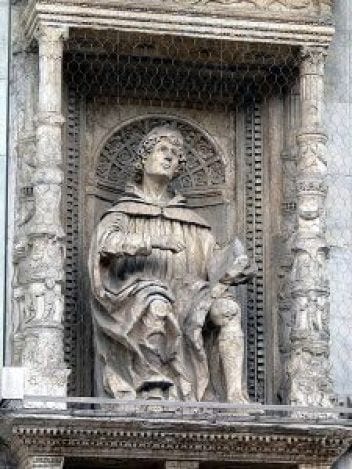
Pliny the Younger:
Moving into the rule of the Roman Empire, the heralded author and statesman, Pliny the Younger recounted his famous ghost story around 100AD, proving that these chilling stories have been commonplace for at least two thousand years.
Pliny’s tale tells of a ghostly old man with a long beard and rattling chains haunting a large house in Athens. Despite being told thousands of years ago, this story has all the key ingredients of a classic ghost story; restless spirits, unexplained noises and chilling nightmares.
In modern Western culture, we understand that ghosts are typically associated with ‘unfinished business,’ as mentioned in Pliny’s tale, the ghost that rattled its chains was not at peace until its corpse was discovered and given a proper burial.
The Romans had many beliefs about ghosts, and while it can’t be stated that they all believed in them, it’s fair to say that ghost stories were popular.
The Romans believed in two kinds of ghosts. Pliny’s ghost falls into the first category, known as ‘lemure’. These angry spirits haunted and troubled the living, yet were still honoured with a series of annual feast days. In contrast to the ‘lemure’, the ‘manes’ were ghosts that guided and protected their close living relatives. Often referred to as ‘gods’, the ‘manes’ were celebrated with the ‘Parentelia’ festival and were believed to exist within or under the earth. To please the ‘manes’, Romans would make offerings, often leaving food and drink at their grave.
Lucian of Samosata:
Ancient satirist Lucian of Samosata formalised a disbelief in ghosts with his novel The Lover of Lies. Born in 120 AD, Lucian was an erudite man with a unique sense of humour and used his academic skill to mock his contemporaries. A staunch believer in logic and common sense, Lucian’s novel The Lover of Lies ridicules those who believed in anything remotely supernatural.
In his tale, Lucian tells of a character Democritus, who lived in a tomb outside the city gates, solely to prove that cemeteries were not haunted by ghosts.
He notes that young local men tried to frighten Democritus, dressed in black robes and skull masks, but despite these practical jokes, he refused to believe in the supernatural. While Lucian may have been a firm disbeliever, it’s interesting to note the reference to a classical idea of a ghost’s appearance and one that still stands today.
Famous ghosts in literature:
Whether or not he believed in ghosts, William Shakespeare was fearless in his pursuit to make them integral to his plays. While he was certainly not the only dramatist to feature ghosts in his plays, Shakespeare’s ghosts differ in the importance of their interaction with the living. The earliest Shakespeare play to introduce ghosts is Richard III, in which the eponymous character is visited by the ghostly spirits of his victims.
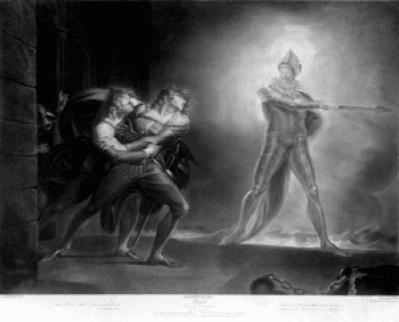
These ghosts taunt Richard with the tales of their demise and predict that he will suffer defeat in his next battle. It seems to the audience that the ghosts have appeared to Richard in his dreams, thus cementing the relationship between ghosts and nightmares.
However, when performed on stage, the ghosts are physically present, with actors made up in the classical ghostly representation; whitened skin and an ‘undead’ appearance.
Shakespeare’ treatment of ghosts was used as a key storytelling tool, as illustrated in his revered play, Macbeth. In a wholly non-traditional manner, the ghost of Banquo appears only to Macbeth and is invisible to all other guests. Shakespeare employs the ghost to convey that the burden of Banquo’s murder lies solely with Macbeth.
Written between 1599 and 1602, Hamlet is one of literature’s most famous ghost stories. Centred around Hamlet’s desire to seek justice for his father’s murder, the play is considered one of the most powerful literary works of all time. Fundamental to the plot is the ghost of Hamlet’s late father. Referred to in the stage directions as ‘Ghost’, the ghost appears just three times in the play, acting as a catalyst for Prince Hamlet’s actions.
Shakespeare’s depiction of the ghost is in line with ancient ghost stories, in that it symbolises and communicates unsolved crime and injustice. The ghost seeks revenge in order to be released from purgatory.
It is worth noting, that there is much debate amongst academics and dramatists as to whether the ghost is really a representation of the deceased King, or in fact, a figment of young Hamlet’s imagination, but once again, Shakespeare has used the concept of a ghost to drive an entire narrative. The existence of the ghost reveals as much about the inner workings of the living characters as it does about the deceased King.

Moving through Shakespeare’s years and beyond, ghosts become a literary genre of their own in the Victorian era.
Charles Dickens:
Writer and social critic, Charles Dickens, was hugely influential in establishing the popularity of the ghost story. From David Copperfield to Oliver Twist, he created some of the most famous fictional characters of all time.
In 1843, Charles Dickens wrote what is probably the most famous ghost story of all time, A Christmas Carol, which follows the journey of Ebeneezer Scrooge from miserly money-lender to a kind and loving man. Told in five chapters, or ‘staves’ as Dickens called them, Scrooge is visited by four spirits on Christmas Eve, each of whom opens his mind to the world around him.
First, he is visited by the ghost of his former business partner Jacob Marley. Depicted in heavy chains and dragged down by money boxes, Marley seeks to show Scrooge his fate should he not change his greedy and selfish ways.
He is told he will be visited by three spirits (the ghosts of Christmas Past, Present and Future), all of whom he must listen to or else be cursed to bear the burden of chains, heavier even than Marley’s. Like Shakespeare’s ghost of Banquo, Dickens’ ghosts appear solely to Scrooge, ranging from an eerie childlike man to the phantom-like ghost of Christmas future. Charles Dickens himself had a personal interest in ghosts, with his friend and biographer John Forster noting that he could easily have become entirely consumed by the supernatural, were he not restrained by his own common sense.
Dickens remembered being told terrifying ghost stories by his nanny, Miss Mercy, at bedtime as a child. He devoured ghost stories as a teenager and took pleasure in scaring himself to the core. As he moved into adulthood, Dickens became more of a sceptic, but his imagination was well and truly ignited by his ghostly childhood fascinations. Taking place over just one evening with a simple, logical structure, A Christmas Carol illustrated how ghost stories work best in a short story or novella format.
This hugely popular style has the most in common with the ghost stories of today. Short and succinct, stories such as these can be easily recounted orally, as many of the most terrifying ghost tales are. Thus bringing us to the end of a concise look at the origins of ghosts. A fascinating study, and one that raises an interesting point in that it tells us more about the lives and thoughts of the living than it does of the dead.
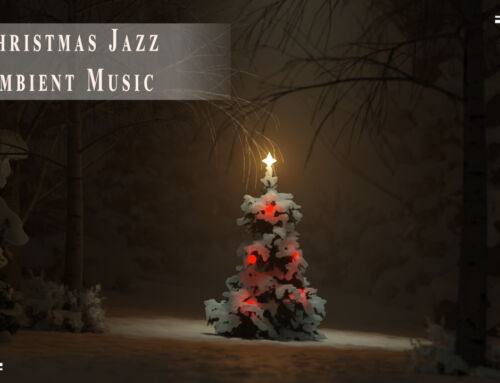



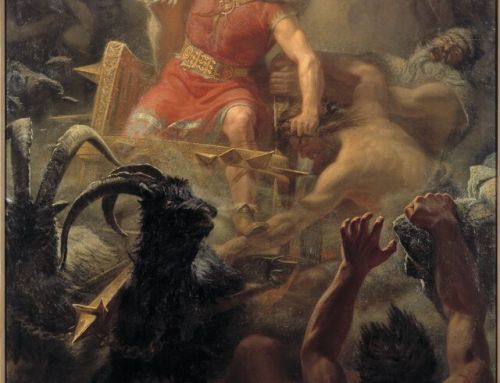
[…] Now that the Christmas session is just around the corner and many festivities will be taking place, let us not forgot that Christmas was and to a minor degree still is a time for telling ghost stories. […]